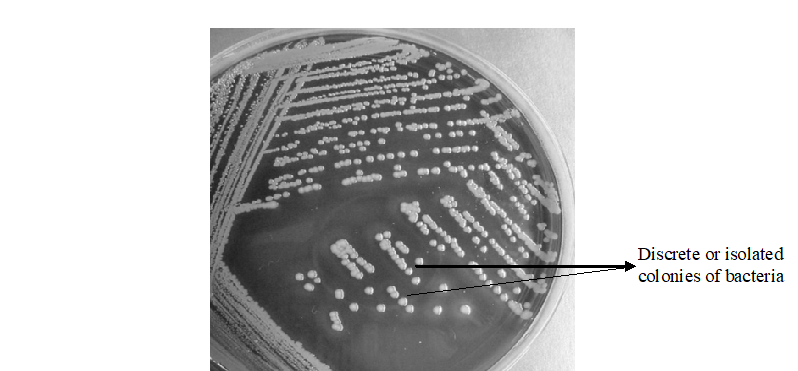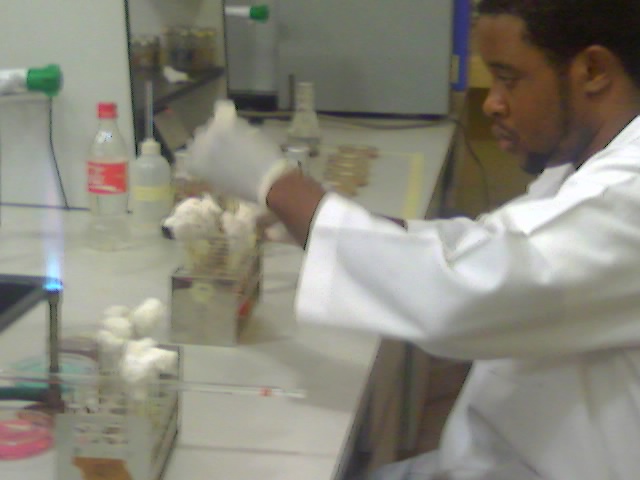Isolation technique is a microbiology procedure which is used to obtain pure cultures of microorganisms especially from a mixed culture or specimen. It includes culturing microorganisms or specimens on selective media which allow the growth of particular organisms.
After culturing, bacterial growth is often expressed on solid culture media as colonies which may contain contaminants and representative colonies of the organism of interest (Figure 1). But through subsequent subculturing onto fresh culture media, pure cultures of the organism of interest can easily be obtained via isolation as one kind of bacterium known as pure cultures.
Pure cultures in microbiology are cultures or microbial growth in which all the microorganisms on solid culture media are of the same strain or species. Pure cultures are also known as axenic cultures; and they are mostly used for further studies in the laboratory such as in performing antimicrobial susceptibility testing (AST) and other biochemical studies.
They usually appear as discrete colonies on culture media plate; and isolated colonies of bacteria are often the best for further microbiological tests in the laboratory especially for performing antimicrobial susceptibility studies and other molecular studies (e.g. amplification of bacterial gene by PCR).

Discrete colonies of bacteria are pure cultures of microorganisms that are of the same species or strain. Pure cultures are different from mixed cultures which are usually made up of diverse microbial community. Isolated colonies (i.e. pure culture) appear on culture media plate after incubation.
REFERENCES
Atlas R.M (2010). Handbook of Microbiological Media. Fourth edition. American Society of Microbiology Press, USA.
Balows A, Hausler W, Herrmann K.L, Isenberg H.D and Shadomy H.J (1991). Manual of clinical microbiology. 5th ed. American Society of Microbiology Press, USA.
Basic laboratory procedures in clinical bacteriology. World Health Organization (WHO), 1991. Available from WHO publications, 1211 Geneva, 27-Switzerland.
Black, J.G. (2008). Microbiology: Principles and Explorations (7th ed.). Hoboken, NJ: J. Wiley & Sons.
Garcia L.S (2010). Clinical Microbiology Procedures Handbook. Third edition. American Society of Microbiology Press, USA.
Garcia L.S (2014). Clinical Laboratory Management. First edition. American Society of Microbiology Press, USA.
Ira R (1995). Bacteriology, Standard Operative procedure manual for microbiology laboratories, National Institute of Biologicals. Pp. 73-97.
Madigan M.T., Martinko J.M., Dunlap P.V and Clark D.P (2009). Brock Biology of Microorganisms, 12th edition. Pearson Benjamin Cummings Inc, USA.
Woods GL and Washington JA (1995). The Clinician and the Microbiology Laboratory. Mandell GL, Bennett JE, Dolin R (eds): Principles and Practice of Infectious Diseases. 4th ed. Churchill Livingstone, New York.
Discover more from #1 Microbiology Resource Hub
Subscribe to get the latest posts to your email.


